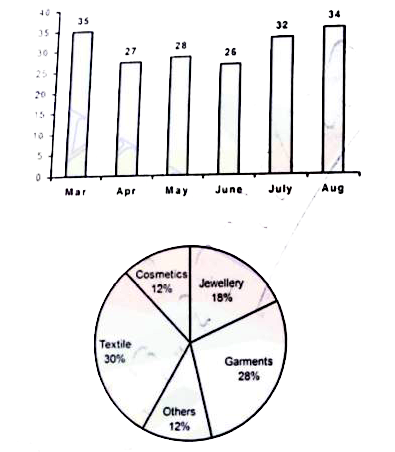Show that for a particle in linear S.H.M., the average kinetic energy over a period of oscillation equals the average potential energy over the same period.
To show that for a particle in linear Simple Harmonic Motion (SHM), the average kinetic energy over a period of oscillation equals the average potential energy over the same period, we can follow these steps:
Step 1: Understand the equations of SHM
The displacement of a particle in SHM can be described by the equation:
y(t)=Asin(ωt)
where:
- A is the amplitude,
- ω is the angular frequency.
Step 2: Calculate the velocity
The velocity v(t) of the particle is the derivative of displacement with respect to time:
v(t)=dydt=Aωcos(ωt)
Step 3: Calculate the kinetic energy
The kinetic energy KE of the particle is given by:
KE=12mv2
Substituting the expression for velocity:
KE=12m(Aωcos(ωt))2=12mA2ω2cos2(ωt)
Step 4: Calculate the average kinetic energy over one period
The average kinetic energy ⟨KE⟩ over one period T is calculated as:
⟨KE⟩=1T∫T0KEdt=1T∫T012mA2ω2cos2(ωt)dt
Step 5: Simplify the integral
Using the identity cos2(x)=1+cos(2x)2:
⟨KE⟩=1T∫T012mA2ω2(1+cos(2ωt)2)dt
=14TmA2ω2∫T0(1+cos(2ωt))dt
Step 6: Evaluate the integral
The integral of 1 over one period T is T, and the integral of cos(2ωt) over one complete cycle is 0:
∫T0cos(2ωt)dt=0
Thus:
⟨KE⟩=14TmA2ω2T=14mA2ω2
Step 7: Calculate the potential energy
The potential energy PE in SHM is given by:
PE=12kx2
where k=mω2 and x=Asin(ωt):
PE=12mω2(Asin(ωt))2=12mA2ω2sin2(ωt)
Step 8: Calculate the average potential energy over one period
The average potential energy ⟨PE⟩ over one period T is:
⟨PE⟩=1T∫T0PEdt=1T∫T012mA2ω2sin2(ωt)dt
Step 9: Simplify the integral for potential energy
Using the identity sin2(x)=1−cos(2x)2:
⟨PE⟩=1T∫T012mA2ω2(1−cos(2ωt)2)dt
=14TmA2ω2∫T0(1−cos(2ωt))dt
Step 10: Evaluate the integral for potential energy
As before, the integral of 1 over one period T is T, and the integral of cos(2ωt) over one complete cycle is 0:
⟨PE⟩=14TmA2ω2T=14mA2ω2
Conclusion
Thus, we find that:
⟨KE⟩=⟨PE⟩=14mA2ω2
This shows that the average kinetic energy over a period of oscillation equals the average potential energy over the same period.
The displacement of a particle in SHM can be described by the equation:
y(t)=Asin(ωt)
where:
- A is the amplitude,
- ω is the angular frequency.
The velocity v(t) of the particle is the derivative of displacement with respect to time:
v(t)=dydt=Aωcos(ωt)
The kinetic energy KE of the particle is given by:
KE=12mv2
Substituting the expression for velocity:
KE=12m(Aωcos(ωt))2=12mA2ω2cos2(ωt)
The average kinetic energy ⟨KE⟩ over one period T is calculated as:
⟨KE⟩=1T∫T0KEdt=1T∫T012mA2ω2cos2(ωt)dt
Using the identity cos2(x)=1+cos(2x)2:
⟨KE⟩=1T∫T012mA2ω2(1+cos(2ωt)2)dt
=14TmA2ω2∫T0(1+cos(2ωt))dt
The integral of 1 over one period T is T, and the integral of cos(2ωt) over one complete cycle is 0:
∫T0cos(2ωt)dt=0
Thus:
⟨KE⟩=14TmA2ω2T=14mA2ω2
The potential energy PE in SHM is given by:
PE=12kx2
where k=mω2 and x=Asin(ωt):
PE=12mω2(Asin(ωt))2=12mA2ω2sin2(ωt)
The average potential energy ⟨PE⟩ over one period T is:
⟨PE⟩=1T∫T0PEdt=1T∫T012mA2ω2sin2(ωt)dt
Using the identity sin2(x)=1−cos(2x)2:
⟨PE⟩=1T∫T012mA2ω2(1−cos(2ωt)2)dt
=14TmA2ω2∫T0(1−cos(2ωt))dt
As before, the integral of 1 over one period T is T, and the integral of cos(2ωt) over one complete cycle is 0:
⟨PE⟩=14TmA2ω2T=14mA2ω2
Thus, we find that:
⟨KE⟩=⟨PE⟩=14mA2ω2
This shows that the average kinetic energy over a period of oscillation equals the average potential energy over the same period.
Topper's Solved these Questions
- OSCILLATIONS AND WAVESBook:PRADEEPChapter:OSCILLATIONS AND WAVESExercise:NCERT CHAPTER
Explore 26 Videos
- OSCILLATIONS AND WAVESBook:PRADEEPChapter:OSCILLATIONS AND WAVESExercise:Higher Order Thinking Skills
Explore 13 Videos
- OSCILLATIONS AND WAVESBook:PRADEEPChapter:OSCILLATIONS AND WAVESExercise:NCERT EXERCISES WITH SOLUTIONS
Explore 19 Videos
- MATHEMATICAL TOOLSBook:PRADEEPChapter:MATHEMATICAL TOOLSExercise:Fill in the blanks
Explore 5 Videos
- PHYSICAL WORLD AND MEASUREMENTBook:PRADEEPChapter:PHYSICAL WORLD AND MEASUREMENTExercise:Competiton Focus Jee Medical Entrance
Explore 18 Videos
Similar Questions
Knowledge Check

What is the average import of textiles indstry over the period ?A22.32billionB24.32 billionC21.84billionDNone of theseAverage kinetic energy of molecules is
Adirectly proportional to square root of temperature .Bdirectly proportional to absolute temperature.Cindependent of absolute temperature.Dinversely proportional to absolute temperatureA table below shows the production and imports of circle oil (in '000 tonnes). Domestic production of crude oil is total of on-share and off-shore production, which is supplemented by imports to meet the total demand of crude oil in the country.

What is the average of total demand of crude oil over the period ?A185 million tonnesB52 million tonnesC18.5 million tonnesD35 million tonnes
The average acceleration over on period of oscialltion for a simple harmonic motion is
View SolutionThe force and acceleration in S.H.M. changes in direction over a period
View SolutionAverage kinetic energy of CO2 at 300 K is E. The average kinetic energy of N2 at the same temperature will be
View SolutionFor a particle executing S.H.M., the kinetic energy K is given K=K0cos2ωt. The maximum value of potential energy is:
View SolutionFor a particle performing a linear SHM the ratio of the frequency of oscillation and the frequency of kinetic energy is
View Solution